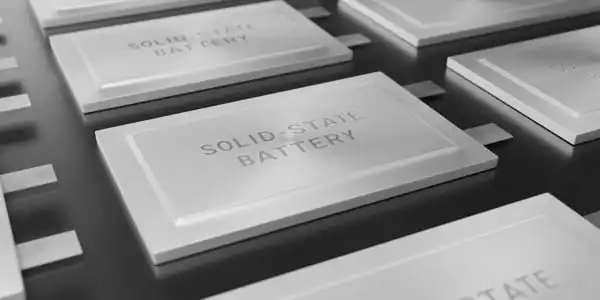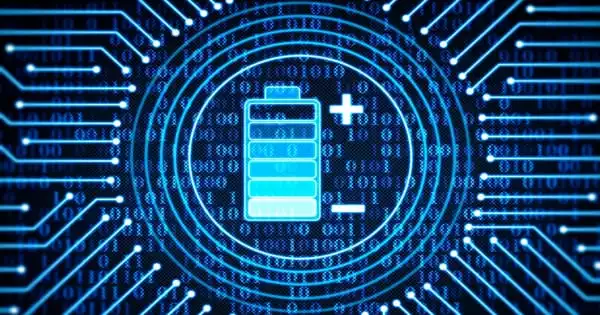For a long time, solid state batteries have been regarded as an important source of power for a wide range of applications, and lithium-ion batteries, in particular, are emerging as the technology of choice for portable electronics. One of the most difficult challenges in the design of these batteries is ensuring that the electrodes retain their integrity and quality over many discharge-recharge cycles.
Researchers from Tokyo Tech, AIST, and Yamagata University have introduced a strategy to restore the low electrical resistance of all-solid-state batteries, bringing them one step closer to becoming the powerhouse of next-generation electronics. They also investigate the underlying reduction mechanism, paving the way for a more fundamental understanding of the operation of all-solid-state lithium batteries.
Scientists are developing new tools to better understand the electrical and chemical processes in batteries in order to create a new generation of highly efficient electrical energy storage devices. They are, for example, working on better materials for anodes, cathodes, and electrolytes in batteries. The development of solid-state batteries, which would aid in overcoming the main problems of liquid electrolyte batteries, namely leakage and/or corrosion at the electrodes, necessitated the use of solid electrolytes with high ionic conductivity in order to limit the ohmic drop at the electrodes.
According to our findings, protons in the LiCoO2 structure play an important role in the recovery process. We hope that explaining these interfacial microscopic processes will contribute to expanding the application potential of all-solid-state batteries.
Prof. Taro Hitosugi
All-solid-state lithium batteries are the new craze in materials science and engineering because conventional lithium-ion batteries can no longer meet the standards for advanced technologies such as electric vehicles, which require high energy densities, fast charging, and long cycle lives. All-solid-state batteries, which use a solid electrolyte rather than the liquid electrolyte found in traditional batteries, not only meet these standards, but are also safer and more convenient due to their ability to charge quickly.
The solid electrolyte, on the other hand, poses its own set of difficulties. It turns out that the interface between the positive electrode and the solid electrolyte has a high electrical resistance, the cause of which is unknown. Furthermore, when the electrode surface is exposed to air, the resistance increases, reducing battery capacity and performance. While several attempts have been made to reduce the resistance, none have been successful in reducing it to 10 ohm cm2 (ohm centimeter-squared), the reported interface resistance value when not exposed to air.

A research team led by Prof. Taro Hitosugi from Tokyo Institute of Technology (Tokyo Tech), Japan, and Shigeru Kobayashi, a doctoral student at Tokyo Tech, may have finally solved this problem in a recent study published in ACS Applied Materials & Interfaces. The team has provided valuable insights into the manufacturing of high-performance all-solid-state batteries by developing a strategy for restoring the low interface resistance and unraveling the mechanism underlying this reduction. Tokyo Tech, the National Institute of Advanced Industrial Science and Technology (AIST), and Yamagata University collaborated on the study.
To begin, the researchers created thin film batteries with a lithium negative electrode, a LiCoO2 positive electrode, and a Li3PO4 solid electrolyte. The team exposed the LiCoO2 surface to air, nitrogen (N2), oxygen (O2), carbon dioxide (CO2), hydrogen (H2), and water vapor (H2O) for 30 minutes before fabricating a battery.
Surprisingly, they discovered that exposure to N2, O2, CO2, and H2 had no effect on battery performance when compared to a non-exposed battery. “Only H2O vapor strongly degrades the Li3PO4 — LiCoO2 interface and dramatically increases its resistance to a value more than ten times that of the unexposed interface,” Prof. Hitosugi explains.
The team then used a technique known as “annealing,” in which the sample was heated to 150°C for an hour in battery form, i.e. with the negative electrode deposited. Surprisingly, this reduced the resistance to 10.3 ohm cm2, which was comparable to the resistance of the unexposed battery!
The team then discovered that the reduction could be attributed to the spontaneous removal of protons from within the LiCoO2 structure during annealing by performing numerical simulations and cutting-edge measurements.
“According to our findings, protons in the LiCoO2 structure play an important role in the recovery process. We hope that elucidating these interfacial microscopic processes will contribute to expanding the application potential of all-solid-state batteries” Prof. Hitosugi concludes.





